Group 1
Tuesday, 22 May 2012
Friday, 30 March 2012
Feedback from cinema audiences!!!
Thursday, 29 March 2012
Evaluation Q5: How did you attract/address your audience?
Mise en scene & Location
In terms of mise en scene, the film appeals to the audience in various ways. This is because there are two different locations in the film opening, therefore having more than one location keeps the audience interested in the film because they will be entreated to know what is going to happen next.
The various props seen within the photos above, appeals to the taste buds of the audience because most of the props in the film give out negative connotation. For example, the blood seen, connotes death and evil. However contrasting with all the negative connotations of some of the props, there are some positive connotations of some of the props, for example: The teddy bear, which connotes innocence, children and love. Both negative and positive connotations of the props in the film are seen throughout the film to foreshadow all the things to come later in the film.
Actor
The actor in our film is a child. This is very appealing to our audience as it makes them interested on what the child will be doing throughout the film. The fact that she is seen to be innocent in the beginning of the film makes the audience see her in a positive way however as the film progresses the evil faces she makes and the colours associated with her makes the audience aware that this child, the main character is not innocent at all.
Storyline
The storyline of Amy is very attractive to the audience as it is about a child which automatically becomes appealing because this goes against the stereotypical view of children, so the audience will be shocked about the fact that the storyline went against this. The audience would be very interested in her mental illness as it is very rare for a girl of her age to suffer from a mental illness like this, so her story of how she got it will be interesting to the audience.
Genre
The Genre which is a Psychological thriller with Horror elements is attractive because thrillers are one of the best selling films compared to Suspense. Therefore this will attract our audience because usually thriller films have a good outcome in terms of how many people enjoyed watching the film.
Sound
The sounds in the film was very attractive to the audience because it was a ghostly voice of a child singing and speaking. This was effective because it reflected the voices of the mental illness (skitzophenia) which makes the audience feel quite frightened about what is going to happen. This help to bring in the horror element within the film.
Film Name
The film was called "Amy" because Amy means beloved therefore giving positive connotations of innocence. This is why it was a perfect decision to call our film this because the character in our film is the complete opposite of what the name Amy connotes. This is appealing to the audience because by hearing the name of the film, the audience may think that she is the victim in the film when really she is the bad person in the film.
Production Company
The production company candi studios is appealing to our audience because candi studios is a small production company which has produced films of the same genre before so this will allow the audience to expect the best.
Rough Cut FeedBack
The feedback that we got from our teacher helped us in terms of how to appeal to the audience because he told us that he was very impressed. However, he said that our film was too disturbing to be a just a psychological thriller, therefore he said that it has horror elements in it.
How we have reached our audience so far
So far, we have reach our audience in various ways. We posted our film on facebook, vimeo and has been shown in the cinema. Soon our film will have DVD release so this will be good because our audience will have their own copy of the film.
Evaluation Q2: How does your media product represent particular social groups?
Representation is: the way groups or individuals are presented in the media. Usually groups or individuals have stereotypical images attached to them, which affect our views of the following: 

Question 2
View more presentations from Angel43218.
Evaluation Q3: What kind of media institution might distribute your media product and why?
GoAnimate.com: Question 3 by jam_girl
Like it? Create your own at GoAnimate.com. It's free and fun!
GoAnimate.com: question 3 part 2 by jam_girl
Like it? Create your own at GoAnimate.com. It's free and fun!
Like it? Create your own at GoAnimate.com. It's free and fun!
GoAnimate.com: question 3 part 2 by jam_girl
Like it? Create your own at GoAnimate.com. It's free and fun!
Monday, 26 March 2012
Wednesday, 21 March 2012
EVALUATION - QUESTION 1
IN WHAT WAYS DOES YOUR MEDIA PRODUCT USE, DEVELOP OR CHALLENGE FORMS AND CONVENTIONS OF REAL MEDIA PRODUCTS?
Monday, 19 March 2012
Evaluation: Question1
In what ways does your media product use, develop or challenge forms and conventions of real media products? on Prezi
My Group has tried in all ways to follow both: Film opening conventions and title sequences conventions in our film.
Here is the our production company Logo compared to a real company logo compared to Orphan:
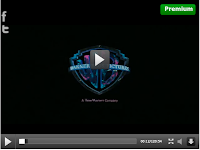
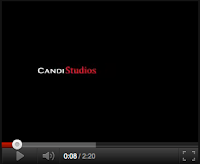
In our film we did not manage to use a different distribution company we used the same one as they would be the same one to distribute it. Unlike the huge Hollywood company that would need a different distribution company because they would a lot of money to distribute it.
Here it is compared to Orphan:
Here is our title sequences compared to the title sequence of seven:
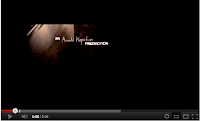
In all ways we tried our best to follow the conventions of title sequences. In our film we introduced intertexuality for example: by making our title sequence very similar to the title sequence of Seven. Within our title sequence we also included the key production and cast member names.
In terms of Visuals and sound, we also followed the rule of 3 and the 180 degree rule to its full extent. We managed to follow and copy some of the scenes found in Seven ( in terms of Visuals) however in term of sound we used the same type of music that would be found in the films Chucky and Orphan as both films are to do with children.
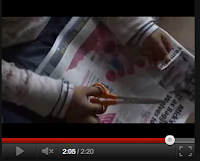
The tone and mood of my film was established through sound, camera, editing and mise en scene.
In terms of camera; we tried our best to get the same angle shots as seen in orphan. Here are the comparisons from our film to Orphan:
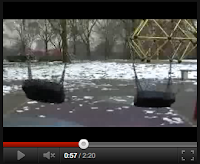
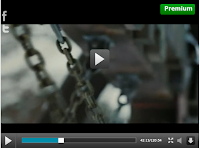
In terms of editing; we were inspired by the film Seven to give the right psychological thriller mood. We use the same overlapping effect:
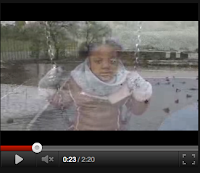
In terms of Mise en Scene, we was inspired by both Orphan and Seven as we took scenes from the playground in Orphan but used the random things to do with the film concept from Seven.
My Group has tried in all ways to follow both: Film opening conventions and title sequences conventions in our film.
Here is the our production company Logo compared to a real company logo compared to Orphan:


In our film we did not manage to use a different distribution company we used the same one as they would be the same one to distribute it. Unlike the huge Hollywood company that would need a different distribution company because they would a lot of money to distribute it.
Here it is compared to Orphan:
Here is our title sequences compared to the title sequence of seven:

In all ways we tried our best to follow the conventions of title sequences. In our film we introduced intertexuality for example: by making our title sequence very similar to the title sequence of Seven. Within our title sequence we also included the key production and cast member names.
In terms of Visuals and sound, we also followed the rule of 3 and the 180 degree rule to its full extent. We managed to follow and copy some of the scenes found in Seven ( in terms of Visuals) however in term of sound we used the same type of music that would be found in the films Chucky and Orphan as both films are to do with children.

The tone and mood of my film was established through sound, camera, editing and mise en scene.
In terms of camera; we tried our best to get the same angle shots as seen in orphan. Here are the comparisons from our film to Orphan:


In terms of editing; we were inspired by the film Seven to give the right psychological thriller mood. We use the same overlapping effect:

In terms of Mise en Scene, we was inspired by both Orphan and Seven as we took scenes from the playground in Orphan but used the random things to do with the film concept from Seven.
EVALUATION - QUESTION 2
HOW DOES YOUR MEDIA PRODUCT REPRESENT PARTICULAR SOCIAL GROUPS?
Representation in Media products usually relies heavily on stereotypes. The problem with this is that stereotypes are based on a small truth and then they are exaggerated and generalised, being quite often negative. In our film we are mainly using the representation of children. Children are usually seen as innocent and vulnerable. We do use this representation, however, we break it down, showing that the girl is not really what she seems. The representation of children in thrillers and horrors may very often be stereotypically evil.
Our main character has both sides. At the same time she is innocent and a victim of her own mental disorder, she behaves in an evil way. The voices she hears lead her to this evil side, therefore she is at the same time the villain and the victim, because she is also suffering with her disease.
We used mise en scene to create this 'false' image of innocence. The girl is dressing normal like normal children. The colourful tights with flowers are very child-like. She also wears a white T-shirt with flowers, very child-like and innocent. The pigtails is the main feature as it really does connote childishness and innocence.
We broke the innocence and represented children as evil figures mainly by the use of editing. Filters with creepy effects made what looked innocent, look scary. The use of some props like blood, the ripped teddy bear, the scrapbook, etc also helped to portray this stereotype. Many other thrillers and horrors use children as a scary element.
Another negative stereotype that we use is mentally disable people. It is very often used in thrillers, especially psychological thrillers. Mentally disable people are usually presented as freaks, psychopaths, serial killers, murderers, evil, harmful, dangerous. The idea that mentally disable people cannot control their actions and do not have a normal acceptable behaviour frightens ‘normal’ people.
Our character Amy is mentally disable and the more she gets into her illness, the creepier and scarier she gets, this is why towards the end of the clip we show her rage, she is losing the plot and cannot control her madness anymore, ending up taking evil actions.
Representation in Media products usually relies heavily on stereotypes. The problem with this is that stereotypes are based on a small truth and then they are exaggerated and generalised, being quite often negative. In our film we are mainly using the representation of children. Children are usually seen as innocent and vulnerable. We do use this representation, however, we break it down, showing that the girl is not really what she seems. The representation of children in thrillers and horrors may very often be stereotypically evil.
Our main character has both sides. At the same time she is innocent and a victim of her own mental disorder, she behaves in an evil way. The voices she hears lead her to this evil side, therefore she is at the same time the villain and the victim, because she is also suffering with her disease.
We used mise en scene to create this 'false' image of innocence. The girl is dressing normal like normal children. The colourful tights with flowers are very child-like. She also wears a white T-shirt with flowers, very child-like and innocent. The pigtails is the main feature as it really does connote childishness and innocence.
We broke the innocence and represented children as evil figures mainly by the use of editing. Filters with creepy effects made what looked innocent, look scary. The use of some props like blood, the ripped teddy bear, the scrapbook, etc also helped to portray this stereotype. Many other thrillers and horrors use children as a scary element.
Another negative stereotype that we use is mentally disable people. It is very often used in thrillers, especially psychological thrillers. Mentally disable people are usually presented as freaks, psychopaths, serial killers, murderers, evil, harmful, dangerous. The idea that mentally disable people cannot control their actions and do not have a normal acceptable behaviour frightens ‘normal’ people.
Our character Amy is mentally disable and the more she gets into her illness, the creepier and scarier she gets, this is why towards the end of the clip we show her rage, she is losing the plot and cannot control her madness anymore, ending up taking evil actions.
EVALUATION - QUESTION 3
WHAT KIND OF MEDIA INSTITUTION MIGHT DISTRIBUTE YOUR MEDIA PRODUCT AND WHY?
Here is the short film 'Panic Attack' I was talking about:
Here is the short film 'Panic Attack' I was talking about:
EVALUATION - QUESTION 4
WHO WOULD BE THE AUDIENCE FOR YOUR MEDIA PRODUCT?
Mirella is a 19 year old girl who loves any type of film. Because her age, gender and social class fit our core audience profile (as I mentioned in the prezi) I thought she would be the ideal profile example for our target audience. Here is an interview I made with her via Facebook:
EVALUATION - QUESTION 7
LOOKING BACK AT YOUR PRELIMINARY TASK, WHAT DO YOU FEEL YOU HAVE LEARNT IN THE PROGRESSION FROM IT TO THE FULL PRODUCT?
Our animatic for our prelim looked more interesting because we used pictures instead of drawings. However, as we did not have much time to spend planning some of the pictures weren’t very well framed or with a good lighting. Our storyboard for our film included a variety of different shots and it was much more informative, telling the type of shot we should make and with the titles included.
In terms of camera skills I think although we had some good framing in the prelim and we attended the expectations of the rule of thirds and a 180 degree rule, in comparison to our actual film, we had a wider variety of shots also attending the expectations of the rule of thirds and a 180 degree rule. So I would say we improved our camera skills.
The mise en scene improved a lot from our prelim to our film. The prelim was filmed in College without many props or preparation of scenario. The only prop that we had was two (empty cups of coffee).
But what really improved were our editing skills. There is a massive difference between the editing of our prelim and the editing of or film. We learned how to use many different filters and transitions. In our prelim we only used a few transitions and slow motion. In our actual film we used many different filters.
In our prelim we used match cut and shot reverse shot. The match cut wasn't very effective but the shot reverse shot worked very well following the 180 degree rule. In our actual film we used match cut more effectively and we also used jump cuts effectively, all following the 180 degree rule.
We also learned how to add titles in a more effective way. Before we only knew how to add the text, and in our actual film we learned how to create different effects to our text, like shaking, blinking, letters falling down.
There is also a big improvement in our sound. We learned how to use many different sound effects overlapping each other. Our sound in our prelim is very simple and based on sounds in Soundtrack Pro, but in our film we used a combination of sounds we found in the internet with Soundtrack Pro sounds. We used sound effects like drums, birds, together with the piano music, and we also used voices (the baby girl talking).
Our animatic for our prelim looked more interesting because we used pictures instead of drawings. However, as we did not have much time to spend planning some of the pictures weren’t very well framed or with a good lighting. Our storyboard for our film included a variety of different shots and it was much more informative, telling the type of shot we should make and with the titles included.
In our actual film we had a variety of different props. We also thought carefully about location.
In terms of lighting, we did have some problems with lighting in our prelim as we were close to a window.
We tried to avoid lighting problems in our actual film by filming outside and filming in parts of the house that were well illuminated. However, ome shots did get a bit dark, so we had to edit them to try and make them brighter. In general our lighting was better in our actual film.
We tried to avoid lighting problems in our actual film by filming outside and filming in parts of the house that were well illuminated. However, ome shots did get a bit dark, so we had to edit them to try and make them brighter. In general our lighting was better in our actual film.
But what really improved were our editing skills. There is a massive difference between the editing of our prelim and the editing of or film. We learned how to use many different filters and transitions. In our prelim we only used a few transitions and slow motion. In our actual film we used many different filters.
In our prelim we used match cut and shot reverse shot. The match cut wasn't very effective but the shot reverse shot worked very well following the 180 degree rule. In our actual film we used match cut more effectively and we also used jump cuts effectively, all following the 180 degree rule.
Monday, 12 March 2012
EVALUATION-QUESTION 4
Who would be the audience for your media product?
Thursday, 8 March 2012
FINISHED!!!!!
It feels so good to be DONE!!! We are so proud of ourselves with everything that we have done, hope we get the grade we deserve!! =]
A quick film we made talking about our finished opening.
Editing sound
This just a screen shot of the editing we had to do to the final edited opening with the sound. It took a bit more time but we eventually got through that little phase and managed to get the sounds all at the right place.
180 Degree rule
When filming two characters the 180 degree rule is used. The whole point of the rule is that it makes sure that characters always have the same left and right position in the scene. If this rule is not carried out it disrupts the scene or disorientates the audience.
Extra Blogging
I just thought since its all coming to an end with the final film opening, i should just say how i think everything went. =]
Well, I think my group has all worked hard together. The editing is on point, the music is all good so is the title sequence. Its been stressful for all of us but we are happy with everything and the last minute filming we did really helped our film we have used all our time limit fully.
Well, I think my group has all worked hard together. The editing is on point, the music is all good so is the title sequence. Its been stressful for all of us but we are happy with everything and the last minute filming we did really helped our film we have used all our time limit fully.
180 Degree rule
Definition: A rule that two characters should always have the same left and the same right relationship to each other.
When a camera crosses the axis, connecting to the two characters is called crossing the line. The new shot is called a reverse angle.
When a camera crosses the axis, connecting to the two characters is called crossing the line. The new shot is called a reverse angle.
Rule of 3
Throughout filming we tried our best to stick to the RULE OF Three.
The rule of thirds is a idea in video and film production in which the frame is "mentally" divided into into nine sections. This acts as guides for framing the image or object whilst filming.
The lines should be 1/3 or 2/3 of the way up or across the frame, than it being in the centre. This rule is not always necessary but it should be understood fully before it is broken.
When filming people, the main line goes through the eyes. (Like the above picture) In this shot, the eyes are placed approximately 1/3 of the way down the frame. however, depending on the type of shot, gettinga shot like this is not always possible.
The rule of thirds is a idea in video and film production in which the frame is "mentally" divided into into nine sections. This acts as guides for framing the image or object whilst filming.
The lines should be 1/3 or 2/3 of the way up or across the frame, than it being in the centre. This rule is not always necessary but it should be understood fully before it is broken.
When filming people, the main line goes through the eyes. (Like the above picture) In this shot, the eyes are placed approximately 1/3 of the way down the frame. however, depending on the type of shot, gettinga shot like this is not always possible.
Change of title AGAIN
Once again we have had to change our title due to the fact our teachers don't highly approve of it. This however has made us pick a simple title which we all consider as nice to fit to our film. It is called 'Amy'.
After hearing the criticism, Mickey advised us that our title sequence should also be a bit longer, he thought it was too short.
After hearing the criticism, Mickey advised us that our title sequence should also be a bit longer, he thought it was too short.
Monday, 5 March 2012
Planning: Two title sequences
My group is doing a discrete opening so i have included to films which use this opening that we are doing and see how alike or different there title sequences are from one another and how it may contribute to my groups one.
1) Se7en
Se7en has been our main influence for our opening. We copied the font of the opening credits and also copying the way they had most on a black background with a small white coloured font. Apart that we also made sure we had the credits in the same order as the credits in 'Se7en'. The shakyness effect we used in our opening credits were also included in our own opening so this film has really been a major influence on our work.
2) Arlington Road
On the other hand we thought as a group that most of our effects used in our opening film using discrete title sequence has really been influenced from Arlington Road. The colour effects and the use of solarize.
1) Se7en
Se7en has been our main influence for our opening. We copied the font of the opening credits and also copying the way they had most on a black background with a small white coloured font. Apart that we also made sure we had the credits in the same order as the credits in 'Se7en'. The shakyness effect we used in our opening credits were also included in our own opening so this film has really been a major influence on our work.
2) Arlington Road
On the other hand we thought as a group that most of our effects used in our opening film using discrete title sequence has really been influenced from Arlington Road. The colour effects and the use of solarize.
Concerns from the rough cut sample
Having showed three of our teachers the rough cut of our film opening, their opinions have varied mainly positive. However there are some concerns such as the length of the film, the genre and the title change.
Time length:
Dan and Usman have both considered our film as short but can be worked with when adding title sequences by extending them. Right now our film is 1min 20 seconds and it is required to be maximum 2 minutes so we have a lot of spare time to use. Whereas Mary agrees with us that we definitely need to go out and film more footage because we have a great film opening but it is just too short. Hence we have decide to film Tuesday morning, tomorrow.
Genre:
Again our genre is meant to be a psychological thriller however our teachers, having watching our rough cut have said that it is becoming a bit out of context of a psychological and looks/has more horror elements making them consider our genre as maybe being a horror thriller. However we have explained our storyline to Mary - which is focused on the girl's disturb and her journey through the mental illness - and she has seen that it can be then said to be a psychological thriller, with some elements of Horror, and so we can stay with this initial genre.
Title Change:
We as a group have decide that we feel to change our title. At first it was called 'Shanelle' but due to changes of the girl and putting the actual name to what we have edited it just did not fit. So we decided it was for the best to change it. Asking Mary for her opinion on this we finally came up with a new name called 'Untarnished'.
Time length:
Dan and Usman have both considered our film as short but can be worked with when adding title sequences by extending them. Right now our film is 1min 20 seconds and it is required to be maximum 2 minutes so we have a lot of spare time to use. Whereas Mary agrees with us that we definitely need to go out and film more footage because we have a great film opening but it is just too short. Hence we have decide to film Tuesday morning, tomorrow.
Genre:
Again our genre is meant to be a psychological thriller however our teachers, having watching our rough cut have said that it is becoming a bit out of context of a psychological and looks/has more horror elements making them consider our genre as maybe being a horror thriller. However we have explained our storyline to Mary - which is focused on the girl's disturb and her journey through the mental illness - and she has seen that it can be then said to be a psychological thriller, with some elements of Horror, and so we can stay with this initial genre.
Title Change:
We as a group have decide that we feel to change our title. At first it was called 'Shanelle' but due to changes of the girl and putting the actual name to what we have edited it just did not fit. So we decided it was for the best to change it. Asking Mary for her opinion on this we finally came up with a new name called 'Untarnished'.
Our film New Title: UNTARNISHED
We have decided to rename our film and call it:
UNTARNISHED
Untarnished means not tarnished or discoloured not tainted or spoiled.
We decided to give this our film name because our main character in the film is seen to be guilty in reality but she just has her own perception of reality therefore making her guilty in the eyes of others.
The title of our film has two meanings:
1) Her actions are out of her control which means she is untarnished
2) However because she does not know what she is doing therefore makes her the opposite of our title.
UNTARNISHED
Untarnished means not tarnished or discoloured not tainted or spoiled.
We decided to give this our film name because our main character in the film is seen to be guilty in reality but she just has her own perception of reality therefore making her guilty in the eyes of others.
The title of our film has two meanings:
1) Her actions are out of her control which means she is untarnished
2) However because she does not know what she is doing therefore makes her the opposite of our title.
Editing- Title sequence
Today's lesson, Mary told us about using the 'title safe'. This guarantees that no matter what kind of screen our film is played on the titles will not be cut off as long as it is within the first rectangle. This was actually a good thing that she told us this because when we put it on some of our title sequences were out of this rectangle box so we had to quickly change this.
More Rough cut feedback
We have had the feedback and we will take on the criticisms.
Interviews asking about what we did
Here we interviewed each other about what we did to contribute to help our film opening.
Working in Lesson
This is us working during lesson. We all do different things during the lesson.
Angeline usually does the editing of the music and blogging.
Anaya usually helps us with the group blogs and with editing.
Rachelle usually does the group blogging and helps editing.
Fabiolla usually does the editing.
Additional Filming
We had to do some more filming as we did not have enough footage. Therefore we have decided to film some of the following:
- Anaya's Cat
- TV- Cebeebies
- Mirror with writing
- Kids Drawings
- Location of Anaya's House
- Anaya's Cat
- TV- Cebeebies
- Mirror with writing
- Kids Drawings
- Location of Anaya's House
How does editing create meaning?
Editing is used in every type of media; whether it is newspapers, magazines, television programmes or films and ect. Wherever editing is used, it is used to improve or emphasize specific things to create meaning in the media.
For example; when editing films such as: using different shots for different parts in the film- it makes the film more interesting and realistic because by using the correct shots and camera angles, (in the right places) it helps to show the emotion that the characters have, which will have a big impact on the audience because it will make them feel exactly the same way as the characters.
Editing is a very important job to do within the media, because the editing is what actually makes the film either have high ratings or low ratings. This is because the editing that is done to the film will control the whole mood of the film and the audience. For example: if the director wants the audience to feel empathy in a specific part in the film, the director may tell the editor to use close up, cut in and over the shoulder shots to ensure that the audience can see the character’s body language, facial expressions and to see from the characters eyes.
In conclusion; editing creates meaning by using various shots and effects to have a strong impact on the audience and to create the mood of the audience.
For example; when editing films such as: using different shots for different parts in the film- it makes the film more interesting and realistic because by using the correct shots and camera angles, (in the right places) it helps to show the emotion that the characters have, which will have a big impact on the audience because it will make them feel exactly the same way as the characters.
Editing is a very important job to do within the media, because the editing is what actually makes the film either have high ratings or low ratings. This is because the editing that is done to the film will control the whole mood of the film and the audience. For example: if the director wants the audience to feel empathy in a specific part in the film, the director may tell the editor to use close up, cut in and over the shoulder shots to ensure that the audience can see the character’s body language, facial expressions and to see from the characters eyes.
In conclusion; editing creates meaning by using various shots and effects to have a strong impact on the audience and to create the mood of the audience.
Extention Task
1)
What Thomas Sutcliffe meant when he said that statement was that there are so many different types of films out to get people to watch them, hence why when you make a film it needs to be different and better than the rest in order to attract its audience. It also means that doing this will be hard because there are so many films out there to compete with therefore to make yours better than the rest it has to be great. What this statement also means is the fact that most of the audience wants the beginning of the film to be entreating, to get their attention immediately and if this is not done, then this could be a big problem.
Jean Jacques Beineix says the risk of instant arousal is the fact that if you start a movie strong then you will have to question what is the next step.
A good beginning must make the audience feel that it doesn’t know nearly enough yet, and at the same time make sure that it doesn’t know too little because it makes the audience still aware of what is going on and keeps them interested. From the beginning of a film, the audience is making a very early adjustment to the film and start to judge the film from early to see whether the film will draw their full attention and whether it is the audience’s money’s worth.
Critic Stanley Kauffmann described a classic opening by beginning with an establishing shot, then a close up of the building or setting. This is because you know where it is taking place and who the hero is or was and what the organisation of the world is like at that time.
Kyle Cooper’s title sequence to the film Seven is effective because the title sequence became part of the first scene in the movie. It told you the story, it introduced you to the obsessive nature of the main character and was foreshadowing most of the things that was to come.
What Orson Welles wanted to achieve with his opening to the film A Touch of Evil was that he wanted it to be seen without the credits, without title music. He wanted to get the audience into his story without giving them time to prepare themselves. However universal studios put a score and credits in the opening scene because to them the effect of the film opening was lost.
A favourite trick of Film Noir is when the beninning is the end or is like the end, which is the trick. The audience can look ahead for what is to come.
The film opening The shining creates suspense because the camera becomes a predator to the people which creates suspence because it is as though the characters are heading in the wrong way.
What Thomas Sutcliffe meant when he said that statement was that there are so many different types of films out to get people to watch them, hence why when you make a film it needs to be different and better than the rest in order to attract its audience. It also means that doing this will be hard because there are so many films out there to compete with therefore to make yours better than the rest it has to be great. What this statement also means is the fact that most of the audience wants the beginning of the film to be entreating, to get their attention immediately and if this is not done, then this could be a big problem.
Jean Jacques Beineix says the risk of instant arousal is the fact that if you start a movie strong then you will have to question what is the next step.
A good beginning must make the audience feel that it doesn’t know nearly enough yet, and at the same time make sure that it doesn’t know too little because it makes the audience still aware of what is going on and keeps them interested. From the beginning of a film, the audience is making a very early adjustment to the film and start to judge the film from early to see whether the film will draw their full attention and whether it is the audience’s money’s worth.
Critic Stanley Kauffmann described a classic opening by beginning with an establishing shot, then a close up of the building or setting. This is because you know where it is taking place and who the hero is or was and what the organisation of the world is like at that time.
Kyle Cooper’s title sequence to the film Seven is effective because the title sequence became part of the first scene in the movie. It told you the story, it introduced you to the obsessive nature of the main character and was foreshadowing most of the things that was to come.
What Orson Welles wanted to achieve with his opening to the film A Touch of Evil was that he wanted it to be seen without the credits, without title music. He wanted to get the audience into his story without giving them time to prepare themselves. However universal studios put a score and credits in the opening scene because to them the effect of the film opening was lost.
A favourite trick of Film Noir is when the beninning is the end or is like the end, which is the trick. The audience can look ahead for what is to come.
The film opening The shining creates suspense because the camera becomes a predator to the people which creates suspence because it is as though the characters are heading in the wrong way.
Thursday, 1 March 2012
Extra Blogging-Help from teacher
When we did not understand something, we took the initiative to ask a teacher for help.
here is an example...
here is an example...
Adding title sequences
We have basically decided that because we are doing a discrete title sequence using the film 'se7en' as our guideline for our title sequences.
We copied their order of how they did their title sequence with the name of production, we too did that. Copying from se7ev included putting our titles the same place but not for all of them. The title and title sizes were also similar if not the exact same as se7en.
To create a similar effect to the title sequence of Se7ven we moved slightly each title to gain a shaky effect.
Rough Cut Feedback
This is a reply from our teacher, Dan. He has told us about the good and bad things about our opening and where/what we can improve on. Overall we received a positive feedback. However, based on his criticisms we have been thinking and considering to change our genre. Dan explains he change of genre could be from a Psychological Thriller to a Horror Thriller.
Tuesday, 28 February 2012
Editing 3
The shots that we took were slightly dark so we went to the following to change the level of lighting.
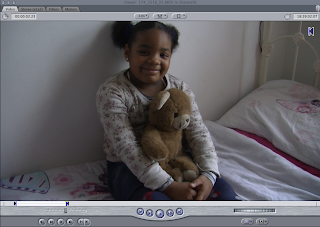
Subscribe to:
Comments (Atom)



























